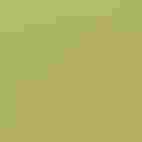Wilson’s Warbler
At a Glance
A small and spritely warbler that moves actively in bushes and trees, often flipping its longish tail about as it hops from branch to branch. Typically stays low in semi-open areas, avoiding the interior of dense forest. Although it nests from coast to coast across Canada, Wilson's Warbler is far more common farther west. In the East it is seen in small numbers, but in the Rockies and westward it is often the most abundant migrant in late spring.
All bird guide text and rangemaps adapted from Lives of North American Birds by Kenn Kaufman© 1996, used by permission of Houghton Mifflin Harcourt Publishing Company. All rights reserved.
Category
Perching Birds, Wood Warblers
IUCN Status
Least Concern
Habitat
Arroyos and Canyons, Desert and Arid Habitats, Forests and Woodlands, Freshwater Wetlands, High Mountains, Tundra and Boreal Habitats
Region
Alaska and The North, California, Eastern Canada, Florida, Great Lakes, Mid Atlantic, New England, Northwest, Plains, Rocky Mountains, Southeast, Southwest, Texas, Western Canada
Behavior
Direct Flight, Flitter
Population
81.000.000
Range & Identification
Migration & Range Maps
Birds wintering in Mexico apparently migrate around west side of Gulf of Mexico, not across it. In the West, those nesting along the Pacific Coast arrive earlier in spring than those nesting in the mountains of the interior.
Description
4 1/2-5" (11-13 cm). All yellow or yellow-green, with no white in tail or wings. Round black cap of males (and some females) is diagnostic. Overall color varies from bright golden on Pacific Coast to dull greenish yellow in east.
Size
About the size of a Sparrow
Color
Black, Green, Yellow
Wing Shape
Rounded
Tail Shape
Notched, Rounded, Square-tipped
Songs and Calls
A rapid, staccato series of chips, which drop in pitch at the end.
Call Pattern
Flat
Call Type
Chirp/Chip
Habitat
Thickets along wooded streams, moist tangles, low shrubs, willows, alders. Breeds as far north as timberline, in thickets, second-growth, bogs, or in alder and willow groves near streams and ponds. In migration and winter, occurs from hot lowland thickets up to cool mountain woods; always in scrubby overgrown clearings and thin woods, not in the interior of dense forest.
Sign up for Audubon's newsletter to learn more about birds like the Wilson's Warbler
Behavior
Eggs
4-6, sometimes 2-7. Creamy white with variable marks of brown. Incubation is by female only, 10-13 days. Cowbirds regularly lay eggs in nests of this species.
Young
Fed by both parents; brooded by female only. Young leave the nest about 8-13 days after hatching. Normally 1 brood per year.
Feeding Behavior
Feeds usually within 10' of ground, searching actively among foliage of bushes. Hops on ground to probe among fallen leaves, and flutters up to take items from the undersides of leaves. Frequently flies out to catch flying insects in mid-air.
Diet
Mostly insects. Presumably feeds mostly on insects, like other warblers. Frequent items in diet include bees, wasps, beetles, caterpillars, and aphids. Also eats some spiders, and sometimes berries. In winter in the tropics, sometimes feeds on protein corpuscles found at the bases of leaves of Cecropia trees.
Nesting
Populations that nest along Pacific Coast tend to lay fewer eggs and raise fewer offspring per nesting attempt, and males mate with only one female. Populations that nest in high mountains of West tend to lay more eggs per clutch and fledge more young, and some males have more than one mate. Nest: Usually on ground, sunken in moss or sedges, often at base of shrub. Along Pacific Coast, nests often placed up to 3' above ground, in shrubs or vines. Nest is bulky open cup, built by female, made of dead leaves, grass, and moss; lined with fine grass and hair.
Conservation
Conservation Status
Numbers probably stable. Adaptable in its choice of wintering habitats, probably not threatened by cutting of forests in the tropics.
Climate Threats Facing the Wilson's Warbler
Choose a temperature scenario below to see which threats will affect this species as warming increases. The same climate change-driven threats that put birds at risk will affect other wildlife and people, too.












